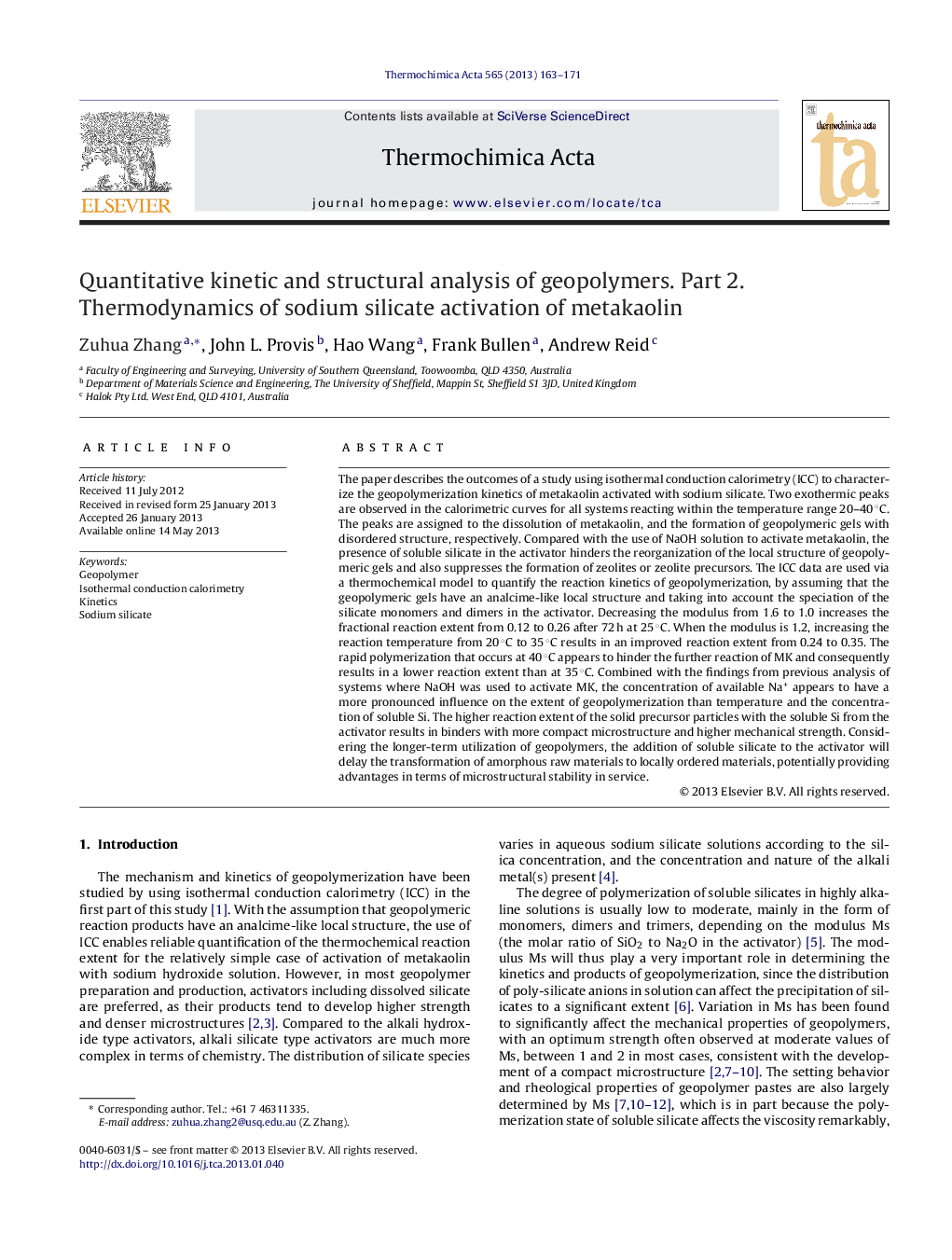| کد مقاله | کد نشریه | سال انتشار | مقاله انگلیسی | نسخه تمام متن |
|---|---|---|---|---|
| 7062448 | 1459519 | 2013 | 9 صفحه PDF | دانلود رایگان |
عنوان انگلیسی مقاله ISI
Quantitative kinetic and structural analysis of geopolymers. Part 2. Thermodynamics of sodium silicate activation of metakaolin
دانلود مقاله + سفارش ترجمه
دانلود مقاله ISI انگلیسی
رایگان برای ایرانیان
کلمات کلیدی
موضوعات مرتبط
مهندسی و علوم پایه
مهندسی شیمی
جریان سیال و فرایندهای انتقال
پیش نمایش صفحه اول مقاله

چکیده انگلیسی
The paper describes the outcomes of a study using isothermal conduction calorimetry (ICC) to characterize the geopolymerization kinetics of metakaolin activated with sodium silicate. Two exothermic peaks are observed in the calorimetric curves for all systems reacting within the temperature range 20-40 °C. The peaks are assigned to the dissolution of metakaolin, and the formation of geopolymeric gels with disordered structure, respectively. Compared with the use of NaOH solution to activate metakaolin, the presence of soluble silicate in the activator hinders the reorganization of the local structure of geopolymeric gels and also suppresses the formation of zeolites or zeolite precursors. The ICC data are used via a thermochemical model to quantify the reaction kinetics of geopolymerization, by assuming that the geopolymeric gels have an analcime-like local structure and taking into account the speciation of the silicate monomers and dimers in the activator. Decreasing the modulus from 1.6 to 1.0 increases the fractional reaction extent from 0.12 to 0.26 after 72 h at 25 °C. When the modulus is 1.2, increasing the reaction temperature from 20 °C to 35 °C results in an improved reaction extent from 0.24 to 0.35. The rapid polymerization that occurs at 40 °C appears to hinder the further reaction of MK and consequently results in a lower reaction extent than at 35 °C. Combined with the findings from previous analysis of systems where NaOH was used to activate MK, the concentration of available Na+ appears to have a more pronounced influence on the extent of geopolymerization than temperature and the concentration of soluble Si. The higher reaction extent of the solid precursor particles with the soluble Si from the activator results in binders with more compact microstructure and higher mechanical strength. Considering the longer-term utilization of geopolymers, the addition of soluble silicate to the activator will delay the transformation of amorphous raw materials to locally ordered materials, potentially providing advantages in terms of microstructural stability in service.
ناشر
Database: Elsevier - ScienceDirect (ساینس دایرکت)
Journal: Thermochimica Acta - Volume 565, 10 August 2013, Pages 163-171
Journal: Thermochimica Acta - Volume 565, 10 August 2013, Pages 163-171
نویسندگان
Zuhua Zhang, John L. Provis, Hao Wang, Frank Bullen, Andrew Reid,